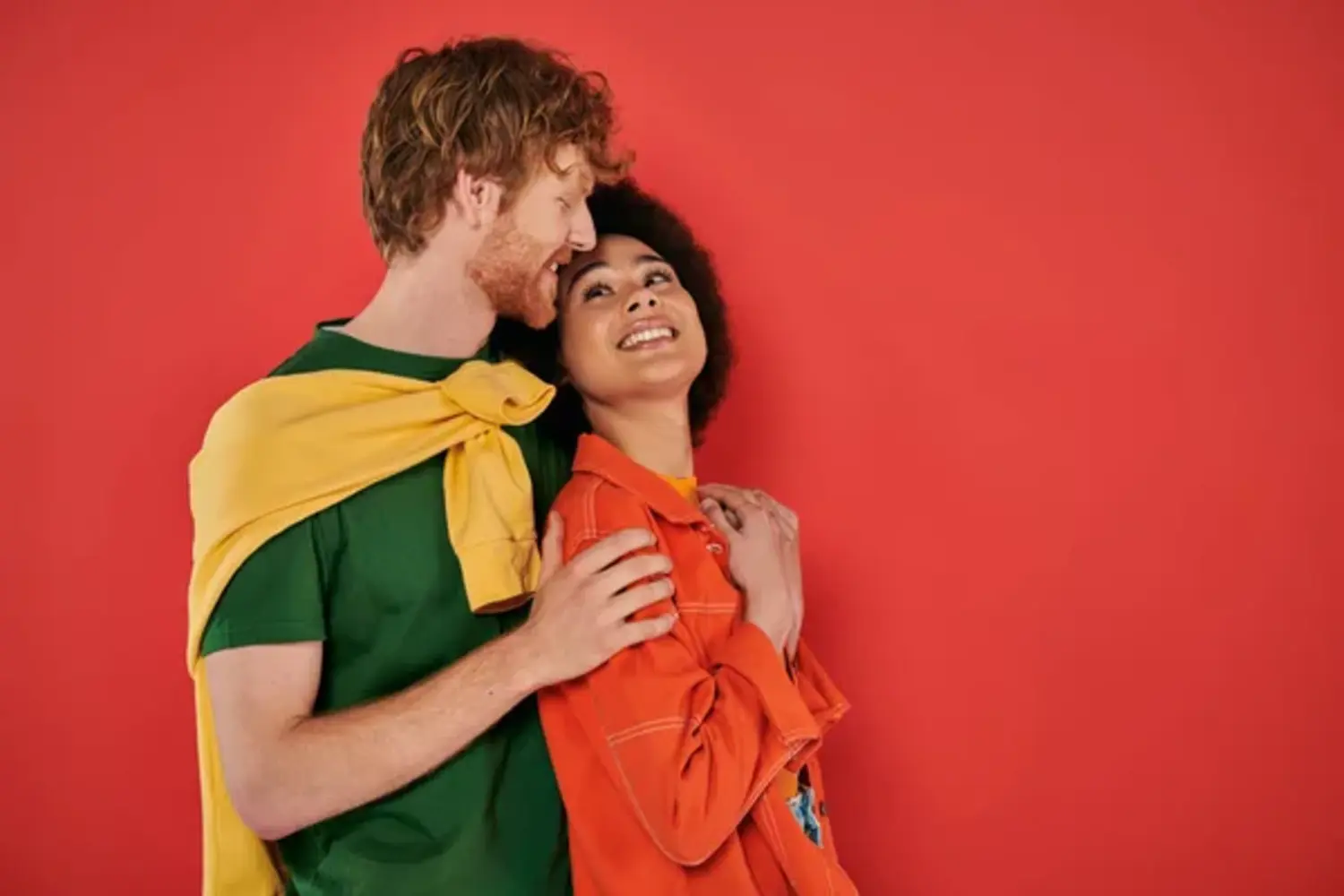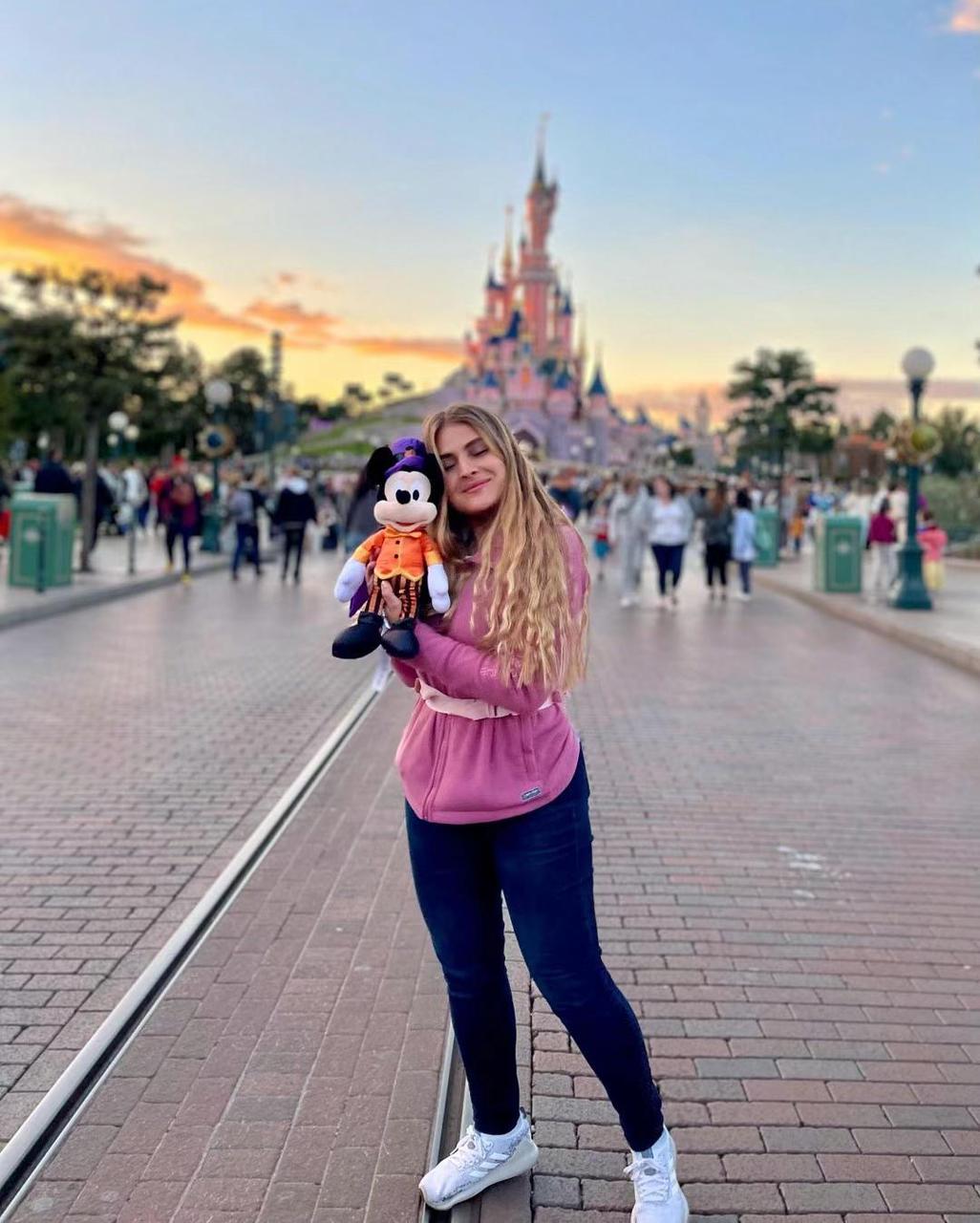Signs he is observing you can offer valuable insights into the level of interest and attention someone directs towards you. Observations can manifest in various ways, both verbally and non-verbally, as well as in digital and real-world environments.
When someone is observing you, they may display subtle cues that reflect their curiosity, attraction, or even potential insecurities.
Understanding these signs can help decipher the underlying motivations behind their observations and foster more meaningful and authentic connections.
In this exploration, we will delve into the multifaceted signs he is observing you, shedding light on the psychological, cultural, and ethical aspects of this intriguing human behavior.

Signs He Is Observing You
Signs he is observing you encompass a wide array of non-verbal, verbal, digital, and environmental cues that indicate someone’s keen interest and attention toward you.
These signs can manifest in gestures, eye contact, and body language, as well as through active listening and genuine engagement in conversations.
In the digital realm, they might be evident in frequent likes and comments on social media, while in real-world settings, chance encounters and mentions of your activities could provide insights into their observations.
Recognizing these signs allows us to decipher their motivations, be it curiosity, romantic interest, or even coping with personal insecurities.
Understanding the psychological, cultural, and ethical aspects of observation enables us to navigate interpersonal connections with respect for privacy and open communication.
So, let’s uncover the signs he is observing you and how these observations shape interpersonal dynamics in diverse contexts.
Signs He Is Observing You
Understanding Observation In Interpersonal Context
A. Definition Of Observation In Interpersonal Relationships
Observation in interpersonal relationships refers to the act of attentively and deliberately watching, listening and analyzing someone’s behavior, words, and actions.
It involves paying close attention to the person’s thoughts, feelings, and reactions to gain insights into their personality, interests, and emotions.
Observation is a fundamental aspect of human interaction, as it helps individuals understand and connect with others on a deeper level. It can take place in various settings, such as social gatherings, workplace environments, friendships, and romantic relationships.
B. Different Types Of Observations (E.G., Casual, Intentional, Stalking)
- Casual Observation: Casual observation occurs naturally in daily interactions without any specific intent. It involves simply paying attention to someone’s behavior and reactions during regular conversations or social encounters. People engage in casual observation to better understand their friends, acquaintances, or colleagues without necessarily seeking detailed information.
- Intentional Observation: Intentional observation involves a conscious effort to focus on someone’s actions and responses with a particular purpose in mind. This form of observation may be driven by curiosity, attraction, or a desire to establish a deeper connection with the individual. It is common in the early stages of romantic relationships or when trying to gauge a person’s intentions.
- Stalking (Unethical Observation): Stalking is an extreme and unethical form of observation characterized by persistent, unwanted surveillance of an individual’s activities, often without their knowledge or consent. This behavior is harmful, invasive, and illegal, and it can cause severe emotional distress and trauma to the person being stalked.
C. Ethical Considerations And Boundaries Of Observation
- Respect for Privacy: Observing someone should always be done within the boundaries of respect for their privacy. It is essential to recognize that everyone is entitled to their personal space and private life. Observing someone discreetly during regular interactions is acceptable, but intentionally invading their privacy, such as snooping through personal belongings or tracking their online activities without permission, is a breach of trust.
- Consent and Communication: Ethical observation requires open communication and consent. If you feel the need to observe someone more closely, it is best to communicate your intentions and seek their consent. Consent allows the other person to decide whether they are comfortable with being observed and to what extent.
- Avoiding Harm and Intentional Distress: Ethical observation should never cause harm or intentional distress to the person being observed. It is crucial to be mindful of how your actions may impact their emotions, especially in sensitive situations.
- Understanding Cultural Differences: Observational boundaries can vary across different cultures. What may be considered appropriate in one culture could be deemed intrusive in another. It is essential to respect cultural norms and adapt your behavior accordingly.
- Professional Boundaries: In professional settings, such as the workplace, observation must adhere to appropriate boundaries. Monitoring employees should be carried out transparently and within legal and ethical frameworks.
- Self-Reflection: Engaging in observation also requires self-awareness and self-reflection. Be conscious of your intentions and any biases that may influence your observations. Regularly check in with yourself to ensure that your observations are respectful and genuine.
Non-Verbal Signs Of Observation
A. Eye Contact And Prolonged Gaze
1. Differentiating Between Friendly And Intense Eye Contact
- Friendly Eye Contact: In casual social settings, friendly eye contact is warm, relaxed, and inviting. It involves looking directly into your eyes while maintaining a comfortable level of gaze. The person may show genuine interest in the conversation and make you feel at ease.
- Intense Eye Contact: On the other hand, intense eye contact can be more probing and prolonged. When someone is intently observing you, their gaze may be unwavering, and they may hold eye contact for an extended period. This intense eye contact can be interpreted as a sign of heightened interest, attraction, or curiosity.

2. Eye Contact Across Cultures And Social Norms
- Eye contact norms can vary across cultures. In some cultures, prolonged eye contact may be considered a sign of respect and attentiveness, while in others, it might be seen as intrusive or disrespectful.
- Similarly, gender, age, and social status can also influence eye contact patterns. For instance, in some cultures, making direct eye contact with elders or authority figures may be deemed impolite, while in others, it may be expected as a sign of respect.
B. Body Language And Posture
1. Leaning Or Turning Toward You
- When someone leans or turns their body toward you during a conversation, it signifies engagement and interest. It suggests that they are actively listening and involved in what you are saying.
- Leaning in can also be a sign of intimacy and closeness, indicating that the person feels comfortable and connected to you.
2. Open And Relaxed Posture Vs. Closed And Defensive Posture
- An open and relaxed posture, such as arms uncrossed and legs not tightly crossed, suggests approachability and receptiveness. It indicates that the person is open to communication and conversation.
- Conversely, a closed and defensive posture, such as crossed arms or legs, hunched shoulders, or avoiding facing you directly, may indicate discomfort or a lack of interest in the conversation.
C. Gestures And Micro-Expressions
1. Nervous Gestures And Anxious Micro-Expressions
- When someone is observing you but feels nervous or anxious, they may exhibit fidgeting behaviors, such as tapping fingers, playing with objects, or adjusting their clothing.
- Anxious micro-expressions, which are fleeting facial expressions that reveal true emotions, may include a brief furrowing of the brow, a slight lip twitch, or subtle tension around the eyes.
2. Subtle Signs Of Nodding Or Smiling While Listening
- Nodding while you speak is a positive non-verbal cue, indicating that the person is actively listening and engaged in the conversation. It shows that they are following your words and are interested in what you have to say.
- Subtle smiles while listening can indicate that the observer finds your company enjoyable. It may suggest a positive emotional connection and an overall positive attitude towards you.

Verbal Signs Of Observation
A. Active Listening
1. Asking Follow-Up Questions
When someone is observing you, they will likely ask follow-up questions after you share something. These questions show that they are engaged in the conversation and interested in delving deeper into the topic.
For example, if you mention a hobby, they might ask about your favorite aspect of it or how you got started.
2. Remembering Details From Previous Conversations
A clear sign that someone is observing you is their ability to recall and reference details from past conversations. It shows that they not only listen attentively but also care enough to retain and remember the information you share.
Remembering specific preferences, experiences, or stories you previously mentioned demonstrates their investment in your interactions.
B. Showing Interest In Your Activities And Opinions
1. Inquiring About Your Hobbies And Interests
When someone is observing you, they will show interest in your hobbies and passions. They might ask about your favorite pastimes, what you enjoy doing in your free time, or if you have any upcoming plans related to your interests.
This indicates that they want to understand your lifestyle and the things that bring you joy.
2. Seeking Your Input On Various Topics
Observant individuals will seek your opinions and perspectives on a wide range of subjects. They value your insights and want to hear what you have to say.
Whether it’s about current events, personal dilemmas, or even simple preferences, they will actively involve you in discussions to gain a deeper understanding of your thoughts and values.
C. Picking Up On Your Emotional Cues
1. Empathetic Responses To Your Feelings
When someone is observing you, they are likely to respond empathetically to your emotions. If you’re happy or excited, they may share in your joy.
If you’re upset or distressed, they will express concern and compassion. Their ability to pick up on and respond to your emotional cues demonstrates a deep level of understanding and care.
2. Acknowledging And Validating Your Emotions
Observant individuals will acknowledge and validate your emotions without judgment. They won’t dismiss your feelings or tell you to “get over it.”
Instead, they will offer support and understanding, letting you know that your emotions are valid and that they are there for you.

Digital And Online Observations
A. Analyzing Social Media Interactions
1. Frequent Likes, Comments, And Shares
One of the signs that someone is observing you digitally is their consistent engagement with your social media posts.
If they frequently like, comment, and share your content, it suggests that they are actively following your updates and are interested in staying connected with your online persona.
2. Monitoring Your Online Presence
When someone is observing you digitally, they might regularly check your social media profiles, keeping track of your recent posts, updates, and interactions with others.
This form of digital surveillance demonstrates a curiosity about your life and a desire to stay updated on your activities.
B. Tracking Your Online Activities
1. Noticing When You Are Online Or Offline
Observant individuals may notice your online presence and availability on various messaging platforms and social media sites. They might send messages or engage in conversations when they see you are active, indicating their interest in communicating with you.
2. Mentioning Topics You Discussed Privately Online
If someone brings up topics or details from private conversations you had online, it indicates that they have been paying close attention to your interactions and are invested in the information you shared.
This level of digital observation demonstrates a higher level of interest in getting to know you on a deeper level.
Environmental Signs Of Observation
A. Noticing Frequency Of Chance Encounters
1. Running Into Each Other In Unlikely Places
One of the environmental signs that someone is observing you is the frequent occurrence of chance encounters in unexpected or unlikely places.
If you consistently find yourselves crossing paths, even in places where your paths wouldn’t naturally intersect, it may not be a mere coincidence. This could suggest that the person is making an effort to be where you are or follow your activities.

2. Being At Events Or Locations You Mentioned
An observant person might pay attention to the places or events you talk about attending and make an effort to be there as well.
For example, if you mention going to a particular coffee shop or a local event, they may show up there to potentially run into you and engage in casual conversation.
B. Mutual Friends And Acquaintances
1. Finding Common Connections
When someone is observing you, they might actively seek out information about your social circle. They may be curious about your friends, colleagues, and acquaintances to understand more about your life and interests.
Finding common connections or mutual friends could be an indication of their effort to learn more about you through others.
2. Conversations With Shared Contacts About You
Observant individuals might engage in conversations with your mutual friends or acquaintances to gather more information about you. They may ask about your interests, hobbies, or activities, trying to gain insights into your personality and what you value.
Digital Security And Privacy Concerns
A. Recognizing Potential Stalking Behavior
1. Cyberstalking And Its Indicators
Cyberstalking refers to the unwanted and persistent surveillance, harassment, or tracking of an individual using digital communication channels.
Signs of cyberstalking can include receiving excessive and unwanted messages, monitoring online activities without permission, or creating fake profiles to gather information about you. If you notice any of these behaviors, it may be an indication of cyberstalking.
2. Protecting Yourself Online
To safeguard your online security and privacy, practice good digital hygiene. This includes using strong and unique passwords for all your accounts, enabling two-factor authentication, and being cautious about what personal information you share publicly on social media platforms.
Regularly review your privacy settings on various platforms to control who can see your posts and information.
B. Addressing Concerns And Setting Boundaries
1. Communicating Your Feelings With The Observer
If you suspect that someone is engaging in stalking behavior or making you uncomfortable with their digital observations, it’s essential to communicate your feelings.
Politely but firmly express your discomfort and request that they respect your boundaries. Be specific about the behaviors that concern you and ask them to stop any unwanted monitoring or harassment.
2. Involving Authorities If Necessary
If the behavior continues despite your communication and becomes increasingly invasive or threatening, it may be necessary to involve law enforcement authorities.
Cyberstalking is a serious offense and may be subject to legal consequences. Keep a record of any harassing messages, interactions, or instances of digital monitoring as evidence to support your case.
Cultural And Contextual Factors
A. Different Norms Of Observation Across Cultures
1. Cultural Variances In Personal Space And Privacy
- Personal space and privacy norms vary widely across cultures. In some cultures, people may maintain more physical distance during conversations to respect personal space, while in others, proximity is common and may not be considered intrusive.
- Likewise, notions of privacy differ, with some cultures valuing a higher level of privacy and discretion about personal matters, while others may have more open and communal sharing practices.
2. Avoiding Misinterpretation In Diverse Settings
- Cultural differences in observation practices can lead to misinterpretations. For example, what may be perceived as assertive or intrusive observation in one culture might be seen as a sign of genuine interest or respect in another.
- Being aware of these differences can prevent misunderstandings and ensure that communication is respectful and considerate of diverse cultural perspectives.
B. Observing Vs. Surveillance In Professional Settings
1. Workplace Monitoring And Employee Rights
- In professional settings, observation takes on a different context, often involving workplace monitoring and surveillance. Employers may use various tools to monitor employee activities, such as tracking internet usage, recording phone calls, or monitoring work-related communications.
- Balancing employee privacy rights with the need for workplace security and productivity is an ongoing challenge. Employers must communicate clearly with employees about monitoring policies and ensure compliance with privacy regulations.
2. Ethical Guidelines For Observation In Business Contexts
- Ethical observation in the workplace involves respecting employee privacy and ensuring that monitoring practices are fair, transparent, and used solely for legitimate business purposes.
- Companies should establish clear policies and guidelines for observation, addressing issues such as data security, consent, and the protection of sensitive information.
Psychological Aspects Of Observation
A. Motivations Behind Observation
1. Curiosity And Interest In Your Life
- One of the primary motivations behind observation is genuine curiosity and interest in getting to know you better. People might observe you because they find you intriguing, admire your personality, or are drawn to your experiences and perspectives.
- Curiosity-driven observation can lead to engaging conversations and connections, as the observer seeks to explore and understand more about your life and interests.
2. Potential Signs Of Attraction Or Romantic Interest
In the context of romantic relationships, observation can be a strong indicator of attraction and interest.
When someone is attracted to you, they may observe you more closely, seeking opportunities to interact, learn about your preferences, and show genuine care and concern for your well-being.
B. Observing As A Coping Mechanism
1. Coping With Insecurities Or Trust Issues
- Some individuals may resort to observation as a coping mechanism to deal with their insecurities or trust issues. By observing you closely, they may be seeking reassurance or trying to validate their beliefs about you and the relationship.
- Insecurities and trust issues can stem from past experiences or a fear of being hurt emotionally, leading the observer to closely monitor your actions and words for any signs of deception or dishonesty.
2. Addressing Observational Behavior In Therapy
For individuals who struggle with excessive or intrusive observation, therapy can be a valuable tool for addressing underlying psychological issues.
Therapists can help clients explore the roots of their observational behaviors, work on building trust and healthy communication, and develop coping strategies to manage insecurities.
Conclusion
In conclusion, recognizing the signs he is observing you can provide valuable insights into the depth of someone’s interest and engagement in your life.
From non-verbal cues such as eye contact and body language to verbal indicators like active listening and genuine curiosity in your activities, these signs paint a vivid picture of their intentions.
Understanding the psychological, cultural, and ethical aspects of observation allows us to navigate these interactions with sensitivity, respecting personal boundaries, and fostering meaningful connections.
It is essential to strike a balance between being observant and respecting privacy, ensuring that our actions and intentions align with mutual respect and genuine interest.
By recognizing and interpreting these signs, we can build stronger and more authentic relationships while promoting a positive and understanding approach to interpersonal dynamics.

Hi, I’m Jasmine Sophie and welcome to my website!
As a marriage counsellor, I’m passionate about helping people figure out solutions to their relationship issues. While based in Austin and with most of my clients coming from the local area, I believed that there were more people out there who could benefit from my services.
That’s why I decided to set up this webiste; so that I can help even more people break through any difficulties they may be facing in their relationships. In my free time, I enjoy activities like golfing and fishing, as well as just spending time with family. It’s just another way for me to explore my creativity and use it towards helping others.
Experience:
With a wealth of experience in the realm of love and relationships, Jasmine has been transforming lives for over a decade. Her remarkable journey as a licensed psychologist and marriage and couples therapist has allowed her to witness the transformative power of love firsthand. Through her extensive work with diverse couples, she has unraveled the secrets to fostering healthy and thriving partnerships.
Expertise:
Jasmine’s expertise lies in untangling the complex web of relationship dynamics. Whether it’s reigniting the spark in long-term marriages, healing wounds from past relationships, or guiding individuals in their pursuit of true love, Jasmine possesses an unwavering commitment to helping people create fulfilling and joyful connections. Her profound insights and practical strategies have earned her accolades as a trusted authority in the love and relationship sphere.
Education:
Jasmine Sophie’s academic achievements serve as a solid foundation for her exceptional knowledge in the field. She holds a master’s degree in Psychology, specializing in marriage and family therapy. Combining her academic prowess with her empathetic nature, Jasmine seamlessly integrates evidence-based techniques and profound wisdom to empower her readers to navigate the complexities of modern relationships with grace and authenticity.
Join Jasmine Sophie on joypassiondesire.com, and embark on a transformative journey to embrace love, ignite passion, and cultivate relationships that transcend ordinary boundaries. Through her illuminating articles and expert guidance, she will empower you to create a love story that is worthy of celebration and admiration. Get ready to embark on an extraordinary adventure of love and self-discovery with Jasmine Sophie as your trusted guide.